Livery badges were terribly popular by the 15th century. Clouds of retainers followed the magnates about- and many would wear their lord’s favourite badge. Here are a few of them – and what the symbols signified.
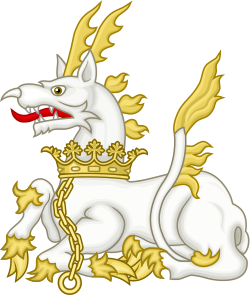 Henry VIth: The chained antelope: a symbol of political wisdom and peace. Chained indicated a sense of acceptance of the duty. He was into his chains was Henry, since he also had a chained swan. The Swan was highly significant beast for the Medieval Englishman, enbued with all sorts of characteristics. It was used a lot by poets and musicians. It symbolized perfection, beauty and grace. It is also light, love, grace, sincerity and perfection. He also used Ostrich feathers, which has the connotation of willing obedience, and if you are to read anything into all these symbols it does rather speak of a man desperately trying to justify he acceptance of a job that he must have bitterly hated and for which he was totally unsuited.
Henry VIth: The chained antelope: a symbol of political wisdom and peace. Chained indicated a sense of acceptance of the duty. He was into his chains was Henry, since he also had a chained swan. The Swan was highly significant beast for the Medieval Englishman, enbued with all sorts of characteristics. It was used a lot by poets and musicians. It symbolized perfection, beauty and grace. It is also light, love, grace, sincerity and perfection. He also used Ostrich feathers, which has the connotation of willing obedience, and if you are to read anything into all these symbols it does rather speak of a man desperately trying to justify he acceptance of a job that he must have bitterly hated and for which he was totally unsuited.
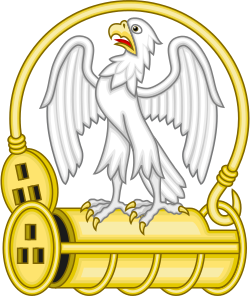 Richard of York: Despite all the Rose thing, if you’d asked a medieval Englishman it’s the Falcon and Fetterlock that they’d have associated with the house of York and with Richard of York. The Falcon was a much more direct image – of the ruthless and relentless pursuit of a goal. Again the fetterlock may denote duty, though jI am frankly guessing, and you should note that while Edmund of York had the fetterlock closed, Richard of York the original rebel against Henry VIth, had the fetterlock opened.
Richard of York: Despite all the Rose thing, if you’d asked a medieval Englishman it’s the Falcon and Fetterlock that they’d have associated with the house of York and with Richard of York. The Falcon was a much more direct image – of the ruthless and relentless pursuit of a goal. Again the fetterlock may denote duty, though jI am frankly guessing, and you should note that while Edmund of York had the fetterlock closed, Richard of York the original rebel against Henry VIth, had the fetterlock opened.
 Edward IVth and Earl of March: He used the Falcon and Fetterlock too, but he mainly became associated with the Sun In Splendour, or the Sun with Streamers. It has the sense of glory and power and magnificence, and may reflect the sol Invictus of classical Rome. The White Rose, a symbol of beauty and grace, also became associated with him.
Edward IVth and Earl of March: He used the Falcon and Fetterlock too, but he mainly became associated with the Sun In Splendour, or the Sun with Streamers. It has the sense of glory and power and magnificence, and may reflect the sol Invictus of classical Rome. The White Rose, a symbol of beauty and grace, also became associated with him.
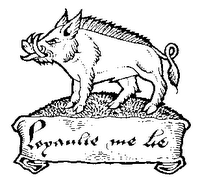 Richard of Gloucester – Richard III: the traditional symbol of Gloucester was the Boar. It symbolised courage, a fierce fighter and warrior. If Richard had been using a Boar’s Head – well that would have been quite different, that’s more your boar on a spit, come on let’s have a pint of ale, don our socks and open toed sandals and have a slap up meal kind of thing.
Richard of Gloucester – Richard III: the traditional symbol of Gloucester was the Boar. It symbolised courage, a fierce fighter and warrior. If Richard had been using a Boar’s Head – well that would have been quite different, that’s more your boar on a spit, come on let’s have a pint of ale, don our socks and open toed sandals and have a slap up meal kind of thing.
 Earl of Warwick: Famously, the Bear and Ragged Staff, and to be the the symbol of warwickshire ever since, and leading to all kind of stuff – the Birmingham Bears for example. The Bear bit is easy – strength, cunning, even cruelty in protection of the family. The Chains are OK – if we buy the idea that it’s about duty. Who knows about the ragged staff. The symbol goes way back to the Beauchamp family who were the earls of Warwick before the Nevilles took over.
Earl of Warwick: Famously, the Bear and Ragged Staff, and to be the the symbol of warwickshire ever since, and leading to all kind of stuff – the Birmingham Bears for example. The Bear bit is easy – strength, cunning, even cruelty in protection of the family. The Chains are OK – if we buy the idea that it’s about duty. Who knows about the ragged staff. The symbol goes way back to the Beauchamp family who were the earls of Warwick before the Nevilles took over.
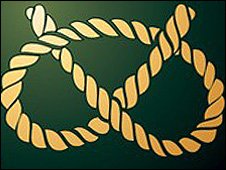 Stafford Knot: The stafford knot is an odd one, and specifically related to the family of the Staffords. There is apparently something of a debate amongst the good folk of Staffordshire about the origin of said knot – one story goes that it came from a clever hangman who needed to hang three villains simultaneously, others point out that as an artistic symbol if goes all the way back to the Anglo Saxons. So it’s a knotty problem. Ho Ho.
Stafford Knot: The stafford knot is an odd one, and specifically related to the family of the Staffords. There is apparently something of a debate amongst the good folk of Staffordshire about the origin of said knot – one story goes that it came from a clever hangman who needed to hang three villains simultaneously, others point out that as an artistic symbol if goes all the way back to the Anglo Saxons. So it’s a knotty problem. Ho Ho.
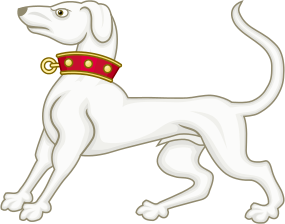 Richmond Greyhound: The Greyhound argent was the symbol of the earls of Richmond; not for very long actually. As it happens it derived from the time that John of Gaunt held the honour and adopted the symbol. It held all the traditional values of the dog (see below), but the Greyhound had an additional association with the ancient British.
Richmond Greyhound: The Greyhound argent was the symbol of the earls of Richmond; not for very long actually. As it happens it derived from the time that John of Gaunt held the honour and adopted the symbol. It held all the traditional values of the dog (see below), but the Greyhound had an additional association with the ancient British.
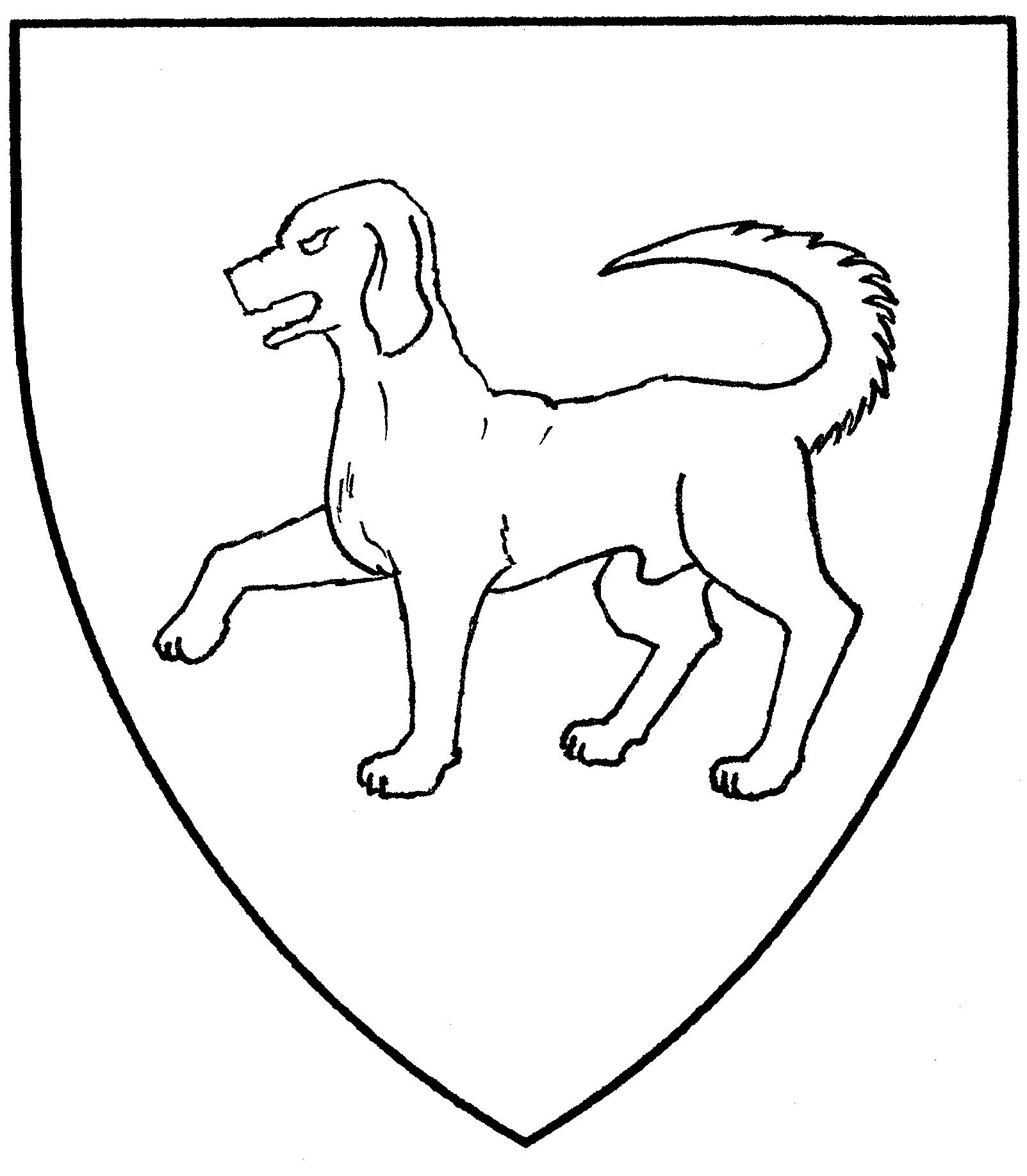 Talbot Dog: I am told that the Talbot Dog was once a specific type of hunting dog, and the phrase Talbot Dog is still used in the doggy world, for rather heavy type hunting dogs. Either way, the characteristics of the dog symbol are as you’d expect – loyalty, vigilance, tenacity and a love of lampposts. It may have come from John Talbot the Earl of Shrewsbury to whom Henry VIth referred as our ‘goode dogge’ – though who know what came first. To be honest, if it does derive from John Talbot, it’s the kind of dog to be avoided it the street, and reminds me of the dictum that the definition of diplomacy is saying ‘Good dog’ while looking for a rock.
Talbot Dog: I am told that the Talbot Dog was once a specific type of hunting dog, and the phrase Talbot Dog is still used in the doggy world, for rather heavy type hunting dogs. Either way, the characteristics of the dog symbol are as you’d expect – loyalty, vigilance, tenacity and a love of lampposts. It may have come from John Talbot the Earl of Shrewsbury to whom Henry VIth referred as our ‘goode dogge’ – though who know what came first. To be honest, if it does derive from John Talbot, it’s the kind of dog to be avoided it the street, and reminds me of the dictum that the definition of diplomacy is saying ‘Good dog’ while looking for a rock.
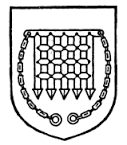 Beaufort: The Beaufort symbol came to be the portcullis, with chains – and I have no idea if it has any special meaning. But it was particularly associated with Margaret Beaufort, famously the mother of Henry VIIth and in the words of someone on the History of England FB site, something of a ‘dude’. So with Henry VIIth accession it became topped with a crown, and became later the symbol of parliament.
Beaufort: The Beaufort symbol came to be the portcullis, with chains – and I have no idea if it has any special meaning. But it was particularly associated with Margaret Beaufort, famously the mother of Henry VIIth and in the words of someone on the History of England FB site, something of a ‘dude’. So with Henry VIIth accession it became topped with a crown, and became later the symbol of parliament.
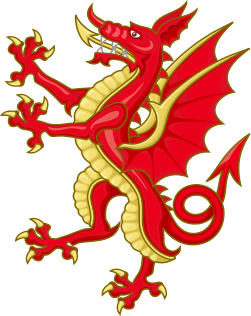 Tudor: From the largely minor player of Owen Tudor came Henry VIth’s half brothers, Edmund and Jasper Tudor. Edmund’s son Henry would become Henry VIIth, while Jasper became Earl of Pembroke and protector and champion of Henry and indeed Margaret Beaufort. The Dragon is a famous symbol in heraldry of course, is a protector of treasure but also the bravest and fiercest of all creatures. The red dragon and it’s connection with Wales goes all the way back to Vortigern, Geoffrey of Monmouth, Merlin, Emrys and all that mystical stuff.
Tudor: From the largely minor player of Owen Tudor came Henry VIth’s half brothers, Edmund and Jasper Tudor. Edmund’s son Henry would become Henry VIIth, while Jasper became Earl of Pembroke and protector and champion of Henry and indeed Margaret Beaufort. The Dragon is a famous symbol in heraldry of course, is a protector of treasure but also the bravest and fiercest of all creatures. The red dragon and it’s connection with Wales goes all the way back to Vortigern, Geoffrey of Monmouth, Merlin, Emrys and all that mystical stuff.
